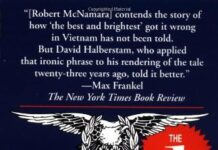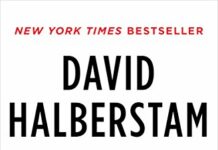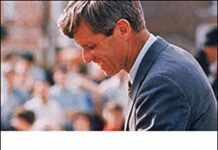
Ebook Info
- Published: 2008
- Number of pages: 719 pages
- Format: PDF
- File Size: 3.98 MB
- Authors: David Halberstam
Description
“In a grand gesture of reclamation and remembrance, Mr. Halberstam has brought the war back home.”—The New York Times David Halberstam’s magisterial and thrilling The Best and the Brightest was the defining book about the Vietnam conflict. More than three decades later, Halberstam used his unrivaled research and formidable journalistic skills to shed light on another pivotal moment in our history: the Korean War. Halberstam considered The Coldest Winter his most accomplished work, the culmination of forty-five years of writing about America’s postwar foreign policy. Halberstam gives us a masterful narrative of the political decisions and miscalculations on both sides. He charts the disastrous path that led to the massive entry of Chinese forces near the Yalu River and that caught Douglas MacArthur and his soldiers by surprise. He provides astonishingly vivid and nuanced portraits of all the major figures–Eisenhower, Truman, Acheson, Kim, and Mao, and Generals MacArthur, Almond, and Ridgway. At the same time, Halberstam provides us with his trademark highly evocative narrative journalism, chronicling the crucial battles with reportage of the highest order. As ever, Halberstam was concerned with the extraordinary courage and resolve of people asked to bear an extraordinary burden.The Coldest Winter is contemporary history in its most literary and luminescent form, providing crucial perspective on every war America has been involved in since. It is a book that Halberstam first decided to write more than thirty years ago and that took him nearly ten years to complete. It stands as a lasting testament to one of the greatest journalists and historians of our time, and to the fighting men whose heroism it chronicles.
User’s Reviews
Editorial Reviews: Review “An instant classic look at the people, power and politicsthat created a dangerous stage…and then acted on it.”–Chicago Sun-Times”Halberstam is at his very best.”–The Wall Street Journal”He is a peerless reporter of events and facts–with a signature human touch.”–The Seattle Times”His most operatic war story.”–The New York Times Book Review”I could hardly put this book down. Meticulously and thoroughly researched, it is splendidly compelling reading. The Coldest Winter is a superb conjoining of all the factors of this tragic war: the military tactics and strategy of both sides; the international diplomacy; the internal politics; the personalities of the various players. A great work.”–Lt. Gen. Harold G. Moore (Ret.), co-author of We Were Soldiers Once . . . and Young”In a grand gesture of reclamation and remembrance. Mr. Halberstam has brought the war back home.”–The New York Times About the Author David Halberstam (1934-2007) was the author of twenty-two books, including fifteen bestsellers. Born in New York City, Halberstam spent much of the 1960s as a reporter for the New York Times, covering the Vietnam War and the Civil Rights movement. His Vietnam reporting earned him both a George C. Polk Award and a 1964 Pulitzer Prize for International Reporting. Vanity Fair dubbed Halberstam “the Moses of American journalism,” and the subjects of his books reflect his passion and range: war, foreign policy, history, and sports.The Best and the Brightest (1962), his sixth book, a critique of the Kennedy administration’s Vietnam policy, became a #1 bestseller. His next book, The Powers that Be, a study of four American media companies, was hailed by the New York Times as a “prodigy of research.” Many of Halberstam’s books explored themes in professional sports, including bestsellers The Teammates, a portrait of the friendship between baseball players Ted Williams, Dominic DiMaggio, Johnny Pesky, and Bobby Doerr, and The Education of a Coach, a profile of New England Patriots’ Coach Bill Belichick.
Reviews from Amazon users which were colected at the time this book was published on the website:
⭐As the first one-volume account of this war that I’ve read, I found that this book has a lot to recommend it. I know that I learned a lot from it.Halberstam skillfully combines first-hand interviews and existing second-hand sources to weave an interesting, thoughtful narrative that not only tells the story of the war (mainly its first year), but also provides some thoughtful, higher themes. He’s written one of the better general histories about a war that I’ve read.He covers much territory, and gives gripping combat descriptions that show what the everyday soldiers (primarily Americans) went through. Halberstam’s eye for detail, and his ability to pull these stories out of men who largely have been reluctant to tell their stories to nonveterans, is commendable. In keeping with “The Best and the Brightest,” he seems particularly fascinated with the foibles of the higher ups, and in this regard he covers all 4 main combatants well, with a special emphasis on the Chinese and American leaders, primarily through the use of their memoirs and diaries.It may have been the “coldest” or “bitterest” winter of the Coldest War. As Stalin shored up his eastern border in Europe, the process of decolonization was starting to appear in other areas of the world, and Korea (a former Japanese colony divided by the USSR and USA) was an early battleground. On balance, Halberstam’s account paints the Chinese and the United States as using the Korean War to bolster political positions at home. Halberstam spends much time analyzing (maybe overanalyzing) the origins of American beliefs of the Cold War in terms of fears of Communist penetration into US government and other institutions.In brief, the Democrats in the Truman administration felt compelled to act in Korea in order to deflect Republican charges of being soft on Communism, and to defend against the pro-Chiang, anti-Communist China lobby. Many in America believed that the USA had “lost China,” and Halberstam spends some time explaining the lies and half-truths that accompanied what may be the first of American misadventures in Asia (China, then Korea, and then Vietnam). In any event, the Hank Luces of the time wanted to believe that China could be redeemed. MacArthur played to this anti-Democrat counterforce well, and he seemed to embrace a tougher stance on China himself, which is what ultimately got him dismissed. Mao, for his part, apparently saw Korea as a way to assert China’s new independence, from the former colonialists in the West, the pro-Chiang remnants in mainland China, and from his rivals in the USSR.Halberstam clearly sees a connection in Mao and MacArthur by way of their vanity and the monstrosity of their egos. MacArthur had the potential to take his country down a dark path by going to war with China in order to whitewash his huge error in concluding that the Chinese would never invade Korea. Truman removed him, removing that potential threat. Mao had no such check, despite Peng’s attempt to get Mao to face reality. As a result, Mao indeed led China down a dark path, and maybe into an abyss, all of his own making. The perils of unchecked egos in government, and the benefits of democratic civilian authority, are made crystal clear by Halberstam’s morality tale.How all this Greek drama related to the average Joe in Korea isn’t exactly made clear by Halberstam, except that the soldiers on both sides suffered, and too many lost their lives. This seems to be another theme: While the senior leaders argued with each other or indulged their private fantasies, the common people underwent misery. Halberstam tries to balance some decent combat descriptions with a lot of politics, but this is certainly not a complete telling of the war, and nor does it aim to be. While Halberstam does provide some good background and insights on Rhee and Kim, both of whom underscore Halberstam’s main lesson of democracies vs dictatorships, little is said about everyday Koreans. However, the subtitle does make it clear that this is about “America and the Korean War,” and sometimes Halberstam uses “we” to relate to his presumably American audience.Also, in his search for unambiguous dichotomies, for good and bad characters, he may go a little soft on Truman. Truman had a number of moments when he could have relieved or reprimanded MacArthur earlier, in spite of MacArthur’s heightened popularity immediately after Inchon. Isn’t Truman at fault for not being stronger than he was, for letting MacArthur push him too far before making the politically dangerous choice? Perhaps this just highlights the powerful undertow of domestic politics on US foreign policy in the time, but one must wonder if Halberstam too easily gives Truman a pass to set him up as the hero of tale.In a similar way, the fight between the Republicans and the Democrats is a central conflict, and it’s questionable if Halberstam is seeing this war-within-a-war completely objectively at all points. Like Truman, perhaps the Democrats as a whole were too weak and on the defensive when they didn’t need to be. Too, there are some soft conclusions that the American effort wasn’t wasted because it resulted in a prosperous South Korea, a sort of mini-Japan; yet, North Korea still exists today and continues to bring misery to its own people and the region, and Halberstam doesn’t adequately address this fact in light of the events of 1950-1953. Indeed, perhaps the Korean War was (as someone else has said) a war with a draw, a victory, and a defeat. Its ambiguities were the real lesson, and the USA didn’t seem to adequately learn this until Vietnam, wisdom that came too late.Despite the book’s shortcomings, it is a good introduction to the war, its centrality to the developing Cold War, and its impact on later policy, namely in Vietnam. Halberstam writes with a well-practiced, accessible “plain English” style, and he seems to try very hard to rarely exceed two syllables. Typical punchy sentences: “It was a classic Stalin move” and (about a critical miscalculation by MacArthur) “He was wrong.” Halberstam’s varied, engaging style makes each paragraph a quick, lively, and usually enlightening read.The maps are sufficient and numerous enough to follow the action throughout, although this is certainly not an operational “war” history by any means. Given Halberstam’s love of story and his fondness for painting human portraits, the lack of photographs is particular striking (in the softcover version, at least). Such photographs could have underscored some points, giving a sense of the personality of the leaders, for example, or covered some gaps in the narrative (showing the war’s devastation on the Korean people, for example). Even so, Halberstam’s work is a readable and informative account of the war and the events surrounding it. Unfortunately, it was his last.
⭐A small Asian nation, divided into a communist north and a non-communist south, commences a civil war with the communists attacking the south. The US decides to send ground combat formations to protect the south and the government they installed. The war is unpopular in the US and goes badly. It costs the President a chance at a second term. This is not Vietnam, this is Korea.The Korean War is a very bitter memory for Americans. Even though a non-communist South Korea was preserved it was a very unpopular war in America, shortened Truman’s presidential aspirations, ended McArthur’s career, and set America on the endless task of eternal military protection for that nation.I had always thought that Korea marked McArthur’s career peak with the Inchon landing and that the Chinese invasion had been a complete surprise. In other words, McArthur did not see that China was prepared to invade until it happened and his demand to use nuclear weapons was what got him fired. Now I know that I was half right and the half I got wrong was the most important part. McArthur knew. He ignorantly, arrogantly, underestimated the resolve of the PRC. He wasted American lives because of this dereliction. Their blood is on his hands. And he was responsible for much more than American forces. His egregious performance also endangered international UN forces. A truly despicable performance.David Halberstam has produced a very revealing account of how that happened. He begins with a description of the world as it existed at the end of World War II and clearly describes the events that culminated with the North Korean invasion on 25 June, 1950. His writing, as always, is first rate and he tells a very engaging and informative tale. I could not stop reading.The Communist victory in China was the pivotal event affecting the First Indochina War, already underway by 1950; the Korean War; and the subsequent Second Indochina War. I had always wondered why the US didn’t take away any lessons from her involvement in the Korean War. It was not a happy outcome even though a non-communist government was preserved. The war was very unpopular at home and ended with an armistice, not a peace agreement. America’s involvement was plagued by mismanagement and dereliction. The whole affair was overshowed by partisan political concerns.President Johnson, on a White House tape of a phone conversation, said on 27 May, 1964, “…the more I think of it [Vietnam], I don’t know what in the hell…it looks like to me we are getting into another Korea. I don’t see what we can ever hope to get out of there with. I don’t think it is worth fighting for and I don’t think we can get out!”Another Korea! That is why I got this book. I needed to know more about that conflict. I had no idea anyone in the Johnson administration was even thinking about Korea before the decision to put boots on the ground in Vietnam. US involvement in Korea established a permanent burden for the US military and Johnson was right: Vietnam would either become another Korea, with permanent US military involvement, or we could limit US involvement to advice and support.Growing up during the 60s I had always thought of Korea as a victory, or at worst a draw. As I delved into the history of the Vietnam War it became obvious that there were similarities and differences but this book makes it clear that Korea should have provided an overarching cautionary tale for Kennedy and Johnson, especially Johnson, with respect to Vietnam.David Halberstam tells the complete story. From Chang’s loss of the Chinese Civil War, and how Truman was successfully blamed for that outcome, to how the United States then became the guarantor of the Republic of China’s security on Taiwan. How the China Firsters, who convinced the American public that Truman and the Democratic Party really lost China to the Communists, looked on a war in Korea as a catalyst to reignite the war between Communist and Nationalist Chinese. This is a long story of denigrating and underestimating the resolve and ability of North Korea and the PRC while overestimating the abilities of the Nationalist on Taiwan who had just lost a long war.I guess Korea had to be fought but the progression of the war after Inchon did not need to follow the course it took. A better, more engaged, less egomaniacal commander was necessary but partisan political concerns prevented that. The difficulty of fighting a war on the Asian mainland and the obvious necessity to maintain a constant US military force to preserve the peace should have been paramount concerns for any subsequent presidents considering the same action.David Halberstam’s book is a valuable source to understand what happened in Korea and how America eventually lost her way in Vietnam.
⭐David Halberstam, an excellent historian, did not disappoint with the Coldest Winter. It is an in depth examination of the Korean war from all sides, with much insight into MacArthur and his detrimental effect on the war.
⭐This is a tour de force of a book which not only covers the War itself but the dynamics which led to it and the personalities on both sides who played such a major part in this grim forgotten war. Halberstam is ruthless in his analysis, which is always backed up by evidence or contemporary accounts of others who were there. This is required reading for anyone interested in this and the period which follows. Go buy it now…
⭐This is a very good read and great way to learn about this brutal and significant war between 1950-1953.Recommended for readers interested in forgotten conflicts
⭐Great value
⭐no comment
⭐I like the writing of David Halberstam. At its best it is magisterial in its sweep and the ‘helicopter’ approach of recording and recounting events at both the highest and lowest levels of action makes it for me the ideal sort of reading material. I did not know a lot about the Korean War but Halberstam has in this work placed on the record for all time the sacrifices that were made by the men on the front line and the arrogant stupidity of some of the Senior Command involved in the decision making process which ended up causing the needless deaths of so many men.This book should be mandatory reading for all OCS entrants in the US military and beyond.
Keywords
Free Download The Coldest Winter: America and the Korean War in PDF format
The Coldest Winter: America and the Korean War PDF Free Download
Download The Coldest Winter: America and the Korean War 2008 PDF Free
The Coldest Winter: America and the Korean War 2008 PDF Free Download
Download The Coldest Winter: America and the Korean War PDF
Free Download Ebook The Coldest Winter: America and the Korean War


